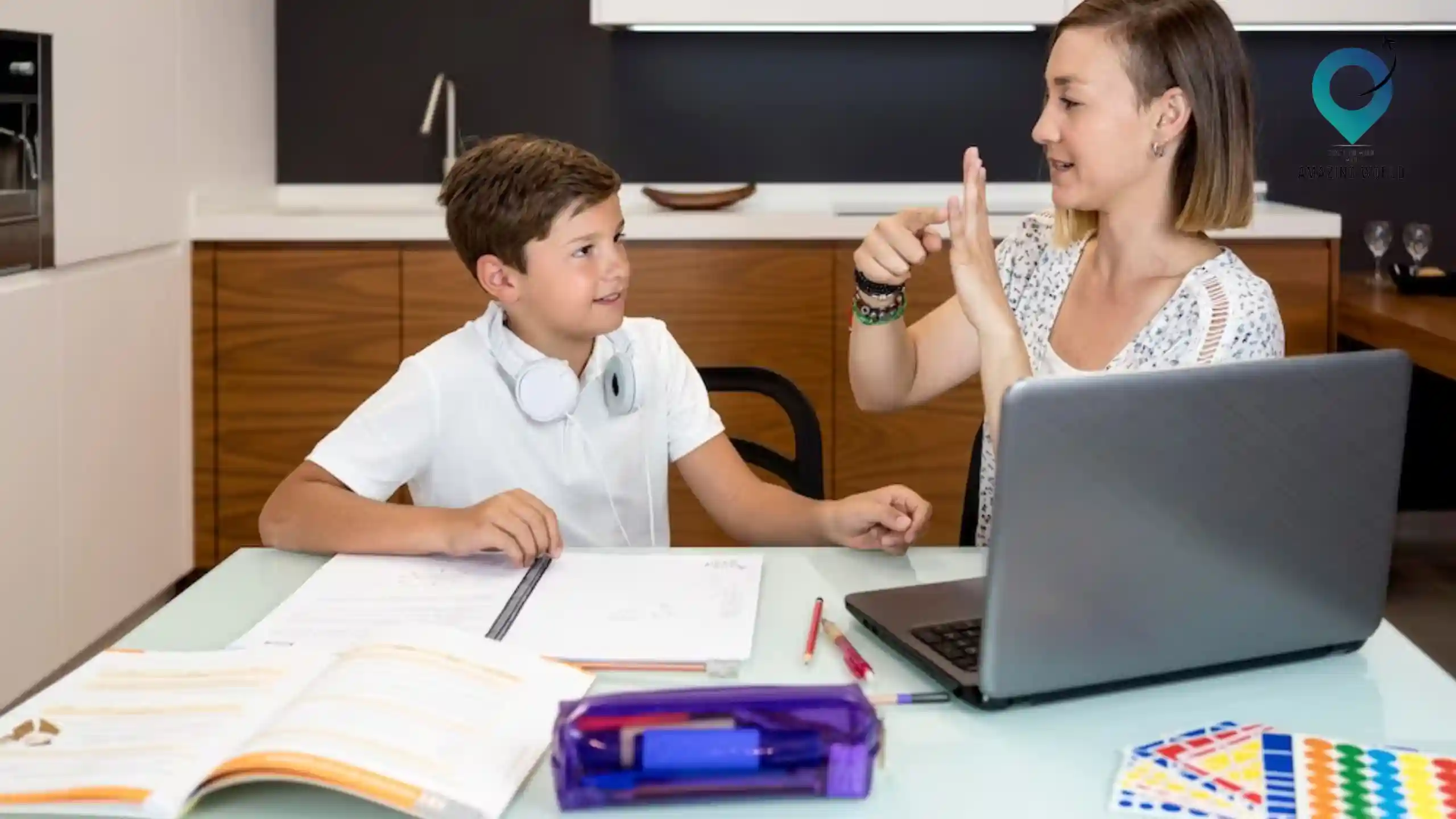Parenting: 15 Effective and Positive discipline techniques for Children
Table of Contents
Toggle
Discipline is a crucial aspect of parenting that helps children develop essential life skills, values, and behaviors. Effective discipline not only guides children’s behavior but also fosters a strong parent-child relationship built on trust and respect.
In this comprehensive guide, we will explore the concept of discipline in parenting and highlight the significance of positive discipline. We will also provide practical strategies and techniques to promote positive discipline and nurture well-rounded individuals. So, let’s delve into the world of discipline and discover how it can shape your child’s future.
Understanding Discipline and Its Importance
Explanation of Discipline in Parenting
Discipline in parenting refers to the methods and techniques used by parents to teach children about appropriate behavior, self-control, and personal responsibility.
It involves setting boundaries, establishing rules, and guiding children toward making responsible choices. Discipline provides a framework for children to develop self-discipline, moral values, and social skills necessary for their overall development.
The Importance of Positive Discipline
Positive discipline focuses on teaching, guiding, and supporting children in a constructive and respectful manner. Unlike punitive discipline, which relies on punishment and coercion, positive discipline emphasizes understanding, empathy, and problem-solving.
It helps children develop a sense of self-worth, self-regulation, and empathy toward others. By promoting positive discipline, parents create a nurturing environment that fosters emotional well-being, resilience, and healthy relationships.
Also, if you are looking best hotels and Homestay deals then we recommended book your hotels and homestay with priceline.com
Tips for Effective and Positive discipline techniques for Children
Technique 1: Communicating Effectively with Your Child
Effective communication is the cornerstone of positive discipline. Practice active listening and empathy to understand your child’s perspective. Encourage open dialogue by creating a non-judgmental space where your child feels comfortable expressing their thoughts and emotions. By validating their feelings and thoughts, you strengthen the parent-child bond and foster cooperation.
Technique 2: Setting Reasonable Limits and Boundaries
Setting reasonable limits and boundaries is essential for teaching children self-control and responsible behavior. Establish age-appropriate expectations that are clear, consistent, and fair.
Children thrive when they know the boundaries and understand the consequences of crossing them. Consistently enforce the limits while providing guidance and explanations to help them internalize the rules.
Technique 3: Encouraging Positive Behavior
Encouraging positive behavior is an effective way to promote discipline. Praise and reinforce good behavior to acknowledge your child’s efforts. Use specific and genuine compliments to highlight their strengths and achievements.
Implement reward systems and incentives to motivate and reinforce positive behavior. Celebrate their successes and help them develop a sense of intrinsic motivation.
Technique 4: Time-Outs and Calm-Down Strategies
Time-outs and calm-down strategies provide children with an opportunity to reflect on their actions and regain self-control. Create a designated safe space where your child can calm down and self-reflect.
Teach them techniques to regulate their emotions, such as deep breathing or counting to ten. Time-outs should be brief and followed by a calm discussion to help your child understand the impact of their behavior.
Technique 5: Natural Consequences and Logical Consequences
Allowing children to experience natural consequences and implementing logical consequences can be effective in teaching responsibility and accountability. Natural consequences occur naturally as a result of a child’s actions.
For example, if a child forgets their lunch, they experience hunger during the day. Logical consequences are directly related to the behavior and provide a learning opportunity. By connecting consequences to behavior, children learn the relationship between actions and outcomes.
Technique 6: Redirection and Distraction
Redirection and distraction are useful techniques to prevent power struggles and redirect children’s attention to more appropriate activities. When you notice your child engaging in undesirable behavior, gently redirect their attention to a different activity or offer an alternative option. By diverting their focus, you can effectively avoid conflicts and promote positive behavior.
Technique 7: Using Choices to Empower Children
Using choices to empower children is a technique that can be effective in fostering their autonomy and decision-making skills. By providing children with opportunities to make choices, you can help them develop a sense of control over their lives, boost their self-confidence, and encourage their independence.
Technique 8: Time-in and Emotional Connection
In addition to time-outs, incorporating time-in and emotional connection is crucial for positive discipline. When your child is upset or behaving inappropriately, provide comfort and understanding instead of isolating them. Create a safe space where they can express their emotions and thoughts. By offering emotional support, you help them develop emotional intelligence and regulate their emotions effectively.
Technique 9: Modeling Good Behaviour
Children learn by observing their parents and caregivers. As a positive role model, demonstrate respectful and appropriate conduct in your interactions with others. Show empathy, kindness, and patience in your daily interactions. By modeling good behavior, you provide a strong foundation for your child’s moral development and guide them toward positive choices.
Technique 10: Problem-solving and Conflict Resolution
Teaching problem-solving and conflict-resolution skills equips children with essential tools for navigating challenges. Encourage your child to express their concerns and brainstorm solutions together. Teach negotiation skills and help them find win-win solutions. By involving them in the problem-solving process, you empower them to resolve conflicts effectively and develop valuable interpersonal skills.
Technique 11: Restitution and Making Amends
Restitution and making amends teach children responsibility, empathy, and the importance of repairing relationships after conflicts. Encourage your child to take responsibility for their actions and make amends by apologizing and taking steps to rectify the situation. This process helps them understand the impact of their behavior on others and fosters empathy and accountability.
Technique 12: Reinforcing Natural Rewards
Helping children experience the joy of accomplishment and connecting effort with achievement is essential for their motivation and self-esteem. Recognize and celebrate their achievements, big or small, to reinforce natural rewards. By highlighting their progress and effort, you nurture a growth mindset and encourage them to persevere in their endeavors.
Technique 13: Consistent Routines and Structure
Consistent routines and structure provide predictability and stability in a child’s life. Establish daily routines for meals, bedtime, homework, and other activities. Consistency helps reduce anxiety and misbehavior by giving children a sense of security and familiarity. Communicate the routines clearly and involve your child in the process to foster their understanding and cooperation.
Technique 14: Active Supervision and Guidance
Active supervision and guidance play a crucial role in preventing problems and promoting positive behavior. Monitor your child’s activities, particularly during challenging or high-risk situations. Intervene early when you observe signs of potential misbehavior or conflicts. By providing guidance and redirecting their behavior, you can help them make appropriate choices and prevent unnecessary challenges.
Technique 15: Teaching Life Skills
Equipping children with essential life skills empowers them to navigate the complexities of adulthood successfully. Teach practical skills such as problem-solving, decision-making, time management, and effective communication. By fostering their independence and responsibility, you prepare them for future challenges and promote their overall development.
Conclusion
Positive discipline is a powerful tool for shaping children’s behavior, character, and future success. By understanding the importance of discipline, setting clear expectations, and implementing positive discipline techniques, parents can create a nurturing environment where children thrive.
Remember to communicate effectively, model good behavior, and provide emotional support to foster a strong parent-child relationship. Implementing these strategies will not only guide your child’s behavior but also promote their emotional well-being, self-discipline, and lifelong skills.
How much did you like Our detailed Positive discipline techniques for Children? Review Also, please share these Blogs with your friends on social media.
Related Article –
- Road Trips Ideas | 12 Tips to Prepare Your Car for a Long Road Trip?
- 150 Best Places to Visit in the United States In 2023
- Road Trip With Kids
- How to Stay Awake While Driving Long Distances
- Audiobooks to Listen to On Your Road Trip
- How to Create an Epic Itinerary Road Trip
- Best Rental Cars For Travel Adventures
Positive discipline techniques for Children FAQs
How can I discipline my child without using punishment?
Disciplining your child without using punishment involves focusing on positive reinforcement, setting clear expectations, and teaching appropriate behavior. Instead of punishment, emphasize natural consequences, logical consequences, and using discipline techniques that promote learning and understanding.
What are some effective discipline strategies for toddlers?
Effective discipline strategies for toddlers include setting consistent boundaries, using positive reinforcement, redirecting their attention to more appropriate activities, and providing age-appropriate choices. It’s important to remain calm and patient while using these strategies, as toddlers are still learning how to navigate their emotions and behaviors.
How can I balance discipline and nurturing as a parent?
Balancing discipline and nurturing as a parent requires finding a middle ground where you can set and enforce boundaries while also providing love, support, and guidance. This involves actively listening to your child, being empathetic, and using positive discipline techniques that focus on teaching and guiding rather than punishment.
Are time-outs effective for disciplining children?
Time-outs can be effective for disciplining children when used appropriately. They provide children with an opportunity to calm down, reflect on their behavior, and learn self-regulation. However, it’s essential to use time-outs as a tool for teaching and not as a form of isolation or punishment.
How do I handle power struggles with my child during discipline?
Handling power struggles with your child during discipline requires maintaining a calm and assertive approach. Avoid engaging in arguments or power struggles and instead focus on clear communication, setting limits, and offering choices when appropriate. It’s important to remain consistent and follow through with consequences.
Should I use rewards and incentives for discipline?
Using rewards and incentives can be an effective way to motivate and reinforce positive behavior in children. However, it’s important to strike a balance and ensure that the focus is on intrinsic motivation rather than solely relying on external rewards. Use rewards and incentives as a tool to encourage desired behavior while also teaching the underlying values and principles.
How can I discipline my child while still maintaining a positive relationship?
Disciplining your child while maintaining a positive relationship requires open communication, empathy, and understanding. Focus on using positive discipline techniques that promote learning and growth, and avoid harsh punishments or criticism. Build a foundation of trust and respect with your child, and consistently reinforce positive behavior through praise and encouragement.
What are natural consequences and how do they work in discipline?
Natural consequences are the direct outcomes of a child’s behavior or choices. They occur without any interference from parents or caregivers. Natural consequences allow children to learn from their actions and understand the cause and effect relationship. For example, if a child refuses to wear a jacket, they may feel cold. It’s important to ensure that the natural consequences are safe and provide a valuable learning experience for the child.
How can I teach my child to regulate their emotions through discipline?
Teaching your child to regulate their emotions through discipline involves modeling emotional regulation, providing a safe and supportive environment, and teaching them coping strategies. Encourage them to identify and express their emotions in healthy ways and provide guidance on how to manage and cope with difficult emotions.
Are there alternative methods to punishment for disciplining children?
Yes, there are alternative methods to punishment for disciplining children. Positive discipline techniques, such as natural consequences, logical consequences, time-ins, problem-solving, and teaching life skills, focus on guiding and teaching rather than relying on punishment. These methods help children develop self-discipline, empathy, and problem-solving skills.
How can I establish clear expectations and rules for discipline?
To establish clear expectations and rules for discipline, communicate them clearly and consistently. Involve your child in the process by discussing and setting age-appropriate expectations together. Use positive language and provide explanations for why certain rules are in place. Reinforce the expectations and rules through consistent enforcement and positive reinforcement.

Meet David Hoper, a passionate travel Blog writer with 7+ years of experience in travel content. Through his exemplary storytelling and engaging narratives, he shares his experiences and brings destinations to life. With a keen eye for detail and a love for exploration, he has cultivated a diverse portfolio of travel blogs that inspire and inform readers worldwide.







